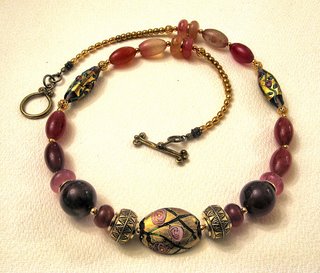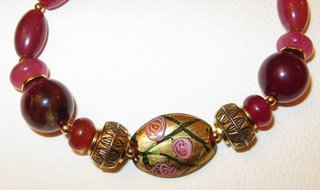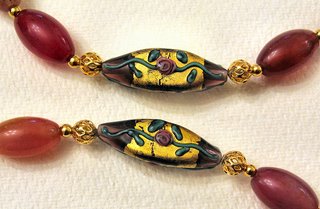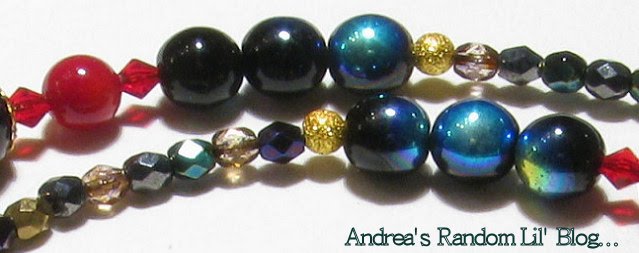It is called Byzantium because of its crimson and gold, almost solemn shades - perhaps smelling a bit like old churches and incense - and the use of Chinese beads (jade and dragon veins agate). These beads allude to the Silk Road, and the role played by Byzantium as the rendez-vous for the merchants on their way to the East, searching for spices, silk, precious resins, gemstones, and so forth.
It tries to symbolically link East and West, or at least the idea I used to have about Constantinople, the Silk Road, and its heritage of churches, gold, stained glass and History.
Here it is:
 The close -ups are:
The close -ups are:
And finally, the other two Czech beads surrounded by the cherry jade beads:







No comments:
Post a Comment